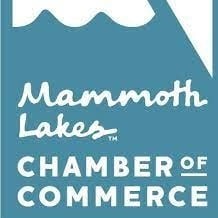The fifth session of the Wildland Fire Academy dealt with what is probably the area of most concern for Eastern Sierra residents—what steps can be taken to protect your home in the face of wildland fires.
The Academy, chaired by Mono Supervisor Bob Gardner, has been functioning as a wildland tutorial with experts from federal, state and local agencies driving home the dangers, firefighting strategies and what residents can do to prepare for and survive what has become the inevitable.
Most Californians have heard the term “defensible space.” With hotter weather and less rain, the Academy, sponsored by the Eastern Sierra Council of Governments, outlined strategies most of us are familiar with but also added structural changes that could make a significant
difference. Knowing that fires are spread by wind-blown embers in advance of the actual flames is key.
Yena Valachovic with the UC Cooperative Extension and Crystal Medhurst with the Whitebark Institute provided home modifications adapted for what is now a critical fire situation.
Direct flame can be mitigated with fuel modification five to 30 feet from structures. While some homeowners consider wood chipped mulch a solution, it isn’t. It’s wood; it can burn. Better to use non-combustible mulch like pea gravel.
Landscape elements, trees and bushes, have to be maintained and spaced out. The idea is to starve the flames rather than feed them.
Fire burns faster going uphill. Homeowners with great views.
High priorities for actual home hardening are the roof, vents and choice of vegetation within the defensible space perimeter. Embers can be blown into the home through vents. Valachovic recommended 1/8-inch metal mesh screening.
Medium priority: decks, windows and siding. The recommendation was tempered glass windows rather than annealed glass. Storing firewood under decks is not a good idea. Away from structured and covered with a fireproof tarp was the recommendation.
There is no way to cover this topic for every home situation. But, there are places to go for help:
Mammoth Lakes Fire Department’s website mlfd.ca.gov
Southern California Edison can be contacted for trees near power lines
Mammoth Lakes Water Districtoffers lawn replacement incentives
Mono/Inyo Master Gardeners at https://www.facebook.com/InyoMonoMasterGardeners/
Do-It Center and High Country Lumber in Mammoth
The next Fire Academy session, September 19, covers smoke, evacuation and other preparation procedures. The final session, October 17, will go over insurance concerns, local fire departments and Fire Safe Councils. For more info go to Citizens Wildfire Education Academy eswildfirealliance.org
Discover more from Sierra Wave: Eastern Sierra News - The Community's News
Subscribe to get the latest posts sent to your email.
















